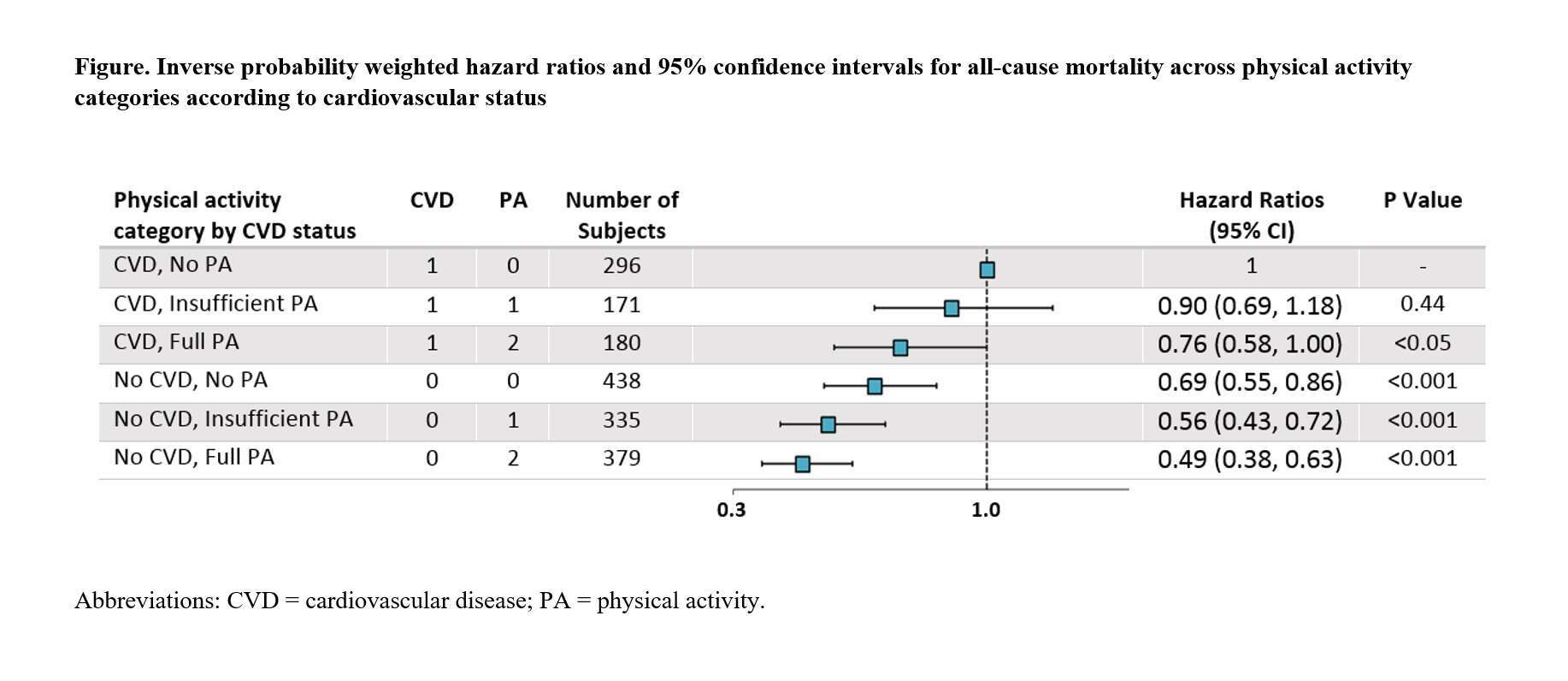
Physical Activity and Long-Term Mortality Risk in Older Adults With and Without Cardiovascular Disease
2Israel Center for Diseases Control, Ministry of Health
Background: Physical activity (PA) is a known protective factor among both general population and cardiovascular disease (CVD) patients. Yet, only a few cohort studies assessed the role of PA among older-adults population, characterized with high CVD prevalence rates.
Objectives: To evaluate the association between PA levels and all-cause mortality among Israeli older-adults, and to assess whether it differs by baseline CVD status.
Methods: Participants were drawn from the National Health and Nutrition Survey of Older Adults Aged 65+ (Mabat-Zahav), conducted by the Israel Center for Disease Control from July 2005-December 2006. Clinical, behavioral, and psychosocial data were collected via interview at study entry; a detailed PA questionnaire was also administered, through which participants were classified as sufficiently-active, insufficiently-active, and inactive, according to the American College of Sports Medicine classification. Mortality data (last follow-up, December 2016) were obtained from the Israeli Ministry of Health. Inverse probability weighted Cox proportional hazards models, based on propensity score, were constructed to assess the adjusted association between PA categories and mortality.
Results: Of the 1799 participants (mean [SD] age, 74.6 [6.2] years; 647 with a history of CVD), 559 (31%) participants were sufficiently-active, 506 (28%) were insufficiently-active and 734 (41%) were inactive. During a mean follow-up period of 9 years, 684 patients (38%) died. PA and mortality demonstrated an inverse dose-response relationship in both CVD and non-CVD groups, with no CVD-by-PA interaction detected on multiplicative-scale (P for interaction=0.70) or additive-scale (P for heterogeneity=0.58). Notably, inactive non-CVD subjects had comparable risk to CVD patients who were sufficiently-active (Figure).
Conclusions: In a nationally-based cohort of subjects aged 65 years and over, PA was inversely associated with mortality risk. CVD patients who preformed sufficient PA had a comparable mortality risk to inactive subjects free of CVD. These findings illustrate the importance of PA in the oldest-old population.


Powered by Eventact EMS